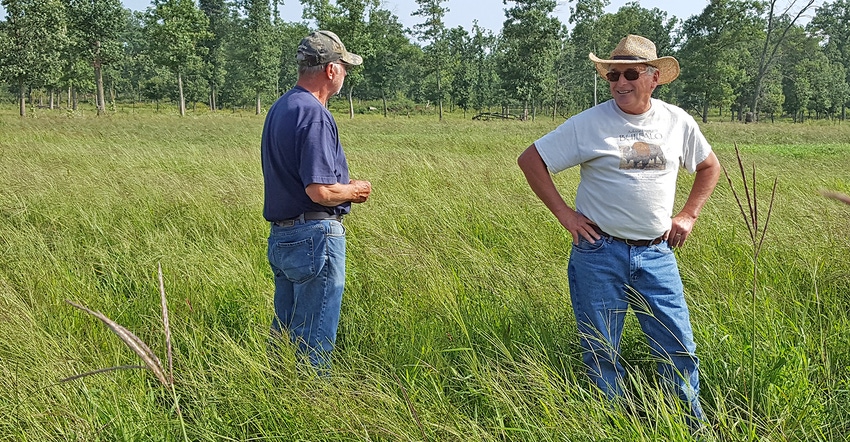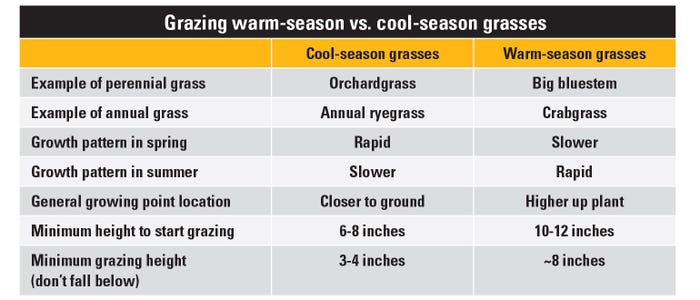October 19, 2018

By Lyssa Seefeldt
At the end of August, I had the opportunity to attend a grazing professional development event hosted in Spooner, Wis. We chatted about a lot of different things, including updates on meadow fescue varieties, legumes and other forages useful in pastures, and toured the forage research plots at the Spooner Agricultural Research Station. We also got an overview of silvopasture as part of the working pastures on a bison ranch.
Dave Fogerty of Black Creek Bison was kind enough to host a tour of his working bison ranch in Spooner. Fogerty does not come from a traditional agriculture background and has taken some unique approaches to running his land to support the bison he raises there. Some of the things he has done differently may work well on cow-calf or grass-finishing operations.
No summer slump
One of the unique things Fogerty is doing is using warm-season grasses in pastures to combat the dreaded “summer slump” of traditional cool-season pastures. Fogerty has been testing several different warm-season grasses, including selected varieties of annual crabgrass, teff grass, switchgrass, little bluestem and big bluestem.
Many of the selected crabgrass varieties only grow well in warmer areas; however, there are a couple of varieties that can grow well in Wisconsin. These include but are not necessarily limited to Quick-N-Big and Quick-N-Big Spreader. More variety development and testing need to be done for the Midwest to help develop growing recommendations.
Teff grass is a warm-season annual bunching grass that originated from Ethiopia; it grows well between 50 degrees F and 80 degrees F. This grass is not frost-tolerant and is an annual grass in Wisconsin. Teff grass is highly palatable for livestock due to the quantity of leaves and fine stems. It can produce a quantity of seeds if left to reach maturity, and those seeds contain higher lysine content than barley or wheat. According to Yoana Newman, Extension forage specialist at University of Wisconsin-River Falls, teff grass planted in 7.5-inch rows resulted in 2,900 pounds per acre of forage dry matter.
Switchgrass, big bluestem and little bluestem have been the more common varieties of warm-season grasses used in pastures. Big bluestem and little bluestem are native to Wisconsin and in some areas can still be found in our landscapes.

One of the biggest differences in managing warm-season versus cool-season grasses is the grazing height. Due to the growth pattern of the grass, management needs to be changed accordingly. To retain best plant longevity to meet the needs of your livestock, you never want to graze more than one-third of the plant at a time. This rule of thumb ensures adequate root reserves are maintained to keep the plant healthy. Grazing more than one-third of the plant at a time removes too much leaf tissue, which forces the plant to use root reserves, weakening it for the future. Successive grazings that remove too much of the plant will eventually deplete root reserves, and the plant will die.
Traditional cool-season grasses grown in Wisconsin (timothy, orchardgrass, etc.) produce rapid growth in the spring and hit the “summer slump” usually from late July through early September, before temperatures cool off. Warm-season grasses, in contrast, tend to hit peak production from July through September, after there has been sufficient warm weather to warm soil temperatures adequately to stimulate growth, thus complementing cool-season pasture production.
Seefeldt is the Extension agriculture agent in Marquette County, Wis. This column is provided by the University of Wisconsin-Extension’s Wisconsin Beef Information Center.
You May Also Like




